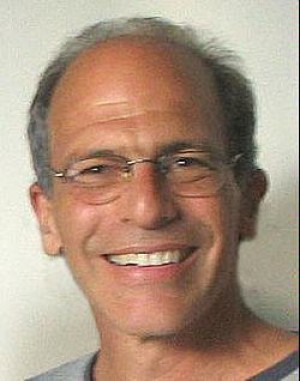David Sonnenschein's story can shed some light on how different experiences meld into a synergy toward sound design. He began studying clarinet at eight years old, performing in symphony orchestras and chamber groups, then took up the flute with the conscious choice to not read music, but to...
show more
David Sonnenschein's story can shed some light on how different experiences meld into a synergy toward sound design. He began studying clarinet at eight years old, performing in symphony orchestras and chamber groups, then took up the flute with the conscious choice to not read music, but to jam, developing his ear's sensitivity and spontaneity. As a neurobiology undergraduate at UC San Diego, his interests in physiology, psychology and dreams were united by research in a sleep laboratory. Fascinated by the mind-body interface, he published several studies relating brainwaves to mental states and biorhythms, and developed insight into the physiological and perceptual processes that serve as foundations for the creation of sound design.Sonnenschein's musical exploration continued when he lived in Indonesia and Thailand, listening, collecting and playing the local instruments made of bamboo, palm fronds and gourds. Returning to the U.S. to direct the award-winning short "Little Red Riding Hood: A Balinese-Oregon Adaptation", he mirrored the form of the Balinese mask dance, playing bamboo instruments with his clarinet and flute, and composing a non-verbal sound track by associating each character with a theme and instrument. In the MFA program at USC Cinema School he found a healthy atmosphere to continue exploring sound design, inspired by guest lecturers like master sound designer Walter Murch. His thesis film "The Owl's Flight" utilized sounds of Pre-Columbian ceramic instruments, animal calls, Tijuana marketplace atmosphere and a variety of fire effects. By constructing the right sonic mood for a story about a Mexican Indian shaman and the battle over a sacred healing mask, he garnered the Verna Fields Trophy for Best Sound by the Motion Picture Sound Editors.While living in Rio de Janeiro, Sonnenschein directed his first feature "Super Xuxa", a Wizard of Oz-like fantasy starring the popular kids TV show host Xuxa Meneghel. This gave him the opportunity to introduce an impactful sound design concept to an industry which in the past had not paid much attention to audio quality. He produced five more features and collaborated with several Brazilian producers and directors to develop their soundtracks, while administering sound design workshops throughout Europe, Asia and the Americas. Finding a gap in the literature regarding the narrative use of the sound track and recognizing the uniqueness of his own sound design methodology, Sonnenschein was inspired to write the book "SOUND DESIGN: The Expressive Power of Music, Voice and Sound Effects in Cinema." Besides teaching and consulting on sound design for dramatic film, Sonnenschein formed Sonic Strategies to create cutting-edge audio for interactive media and develop effective tools for sound healing. Most recently, he is administering online seminars to international universities and individuals, making his knowledge base and experience directly available to everyone through his websites www.SoundDesignForPros.com and www.SonicStrategies.com.
show less

